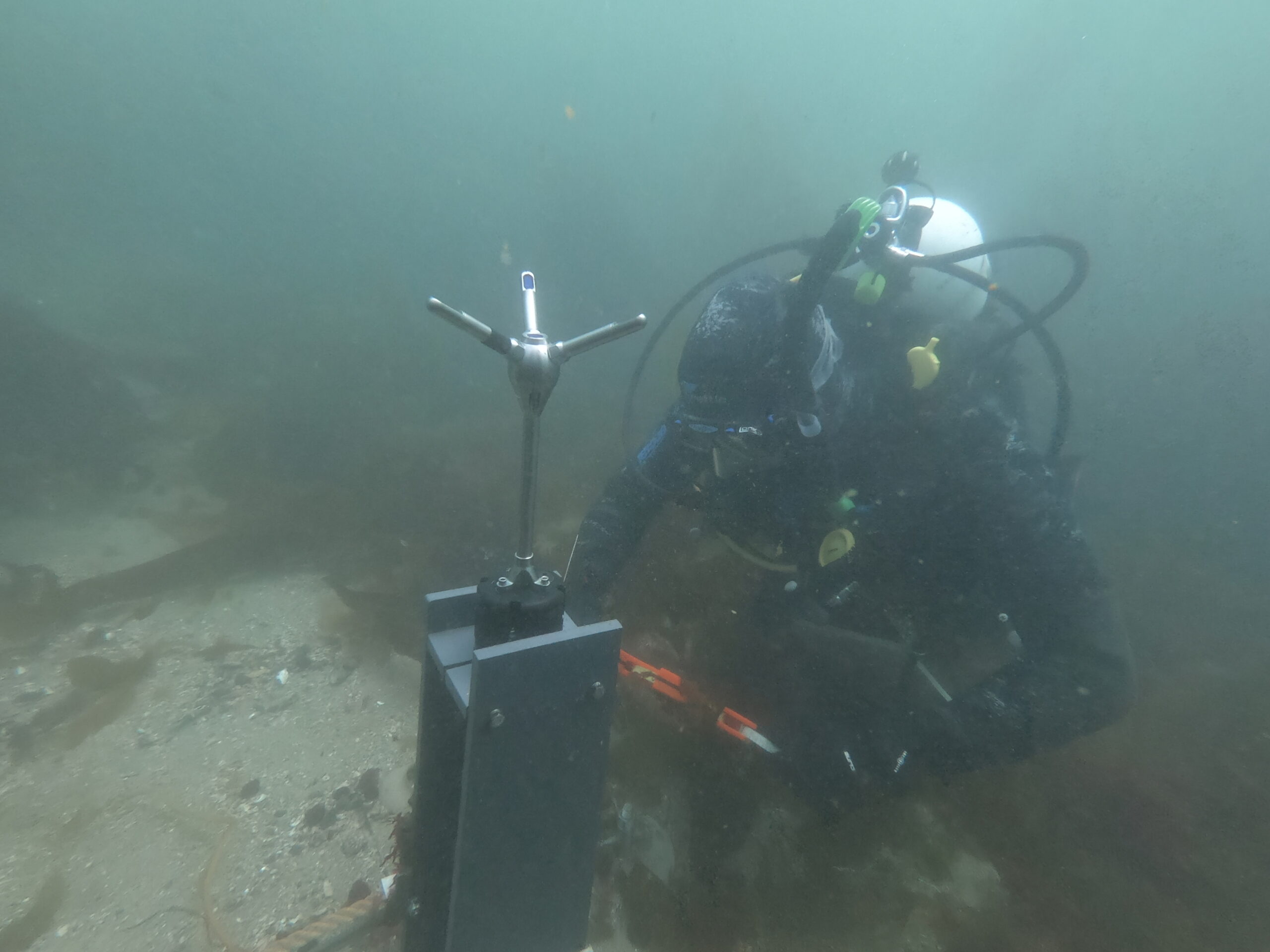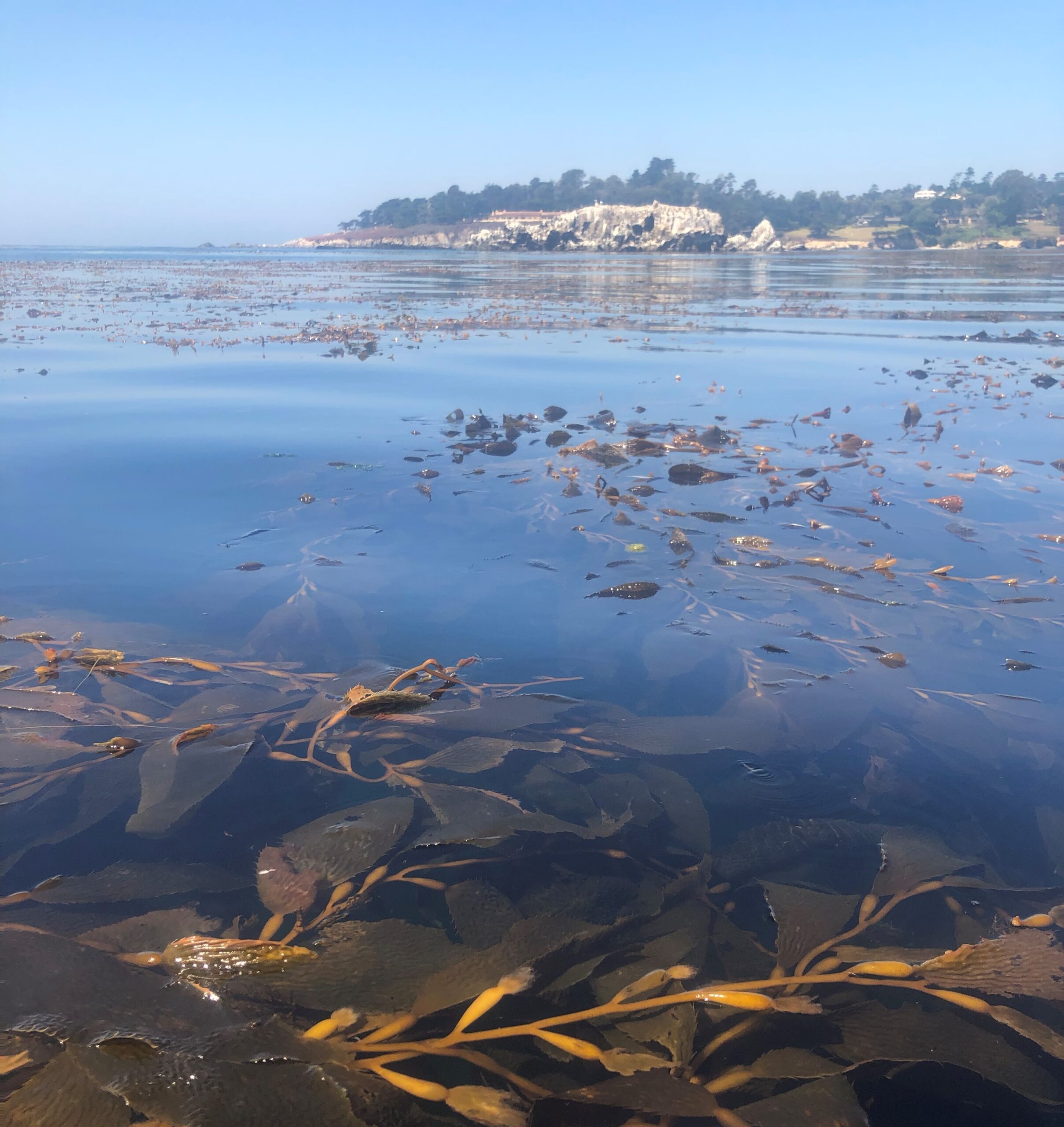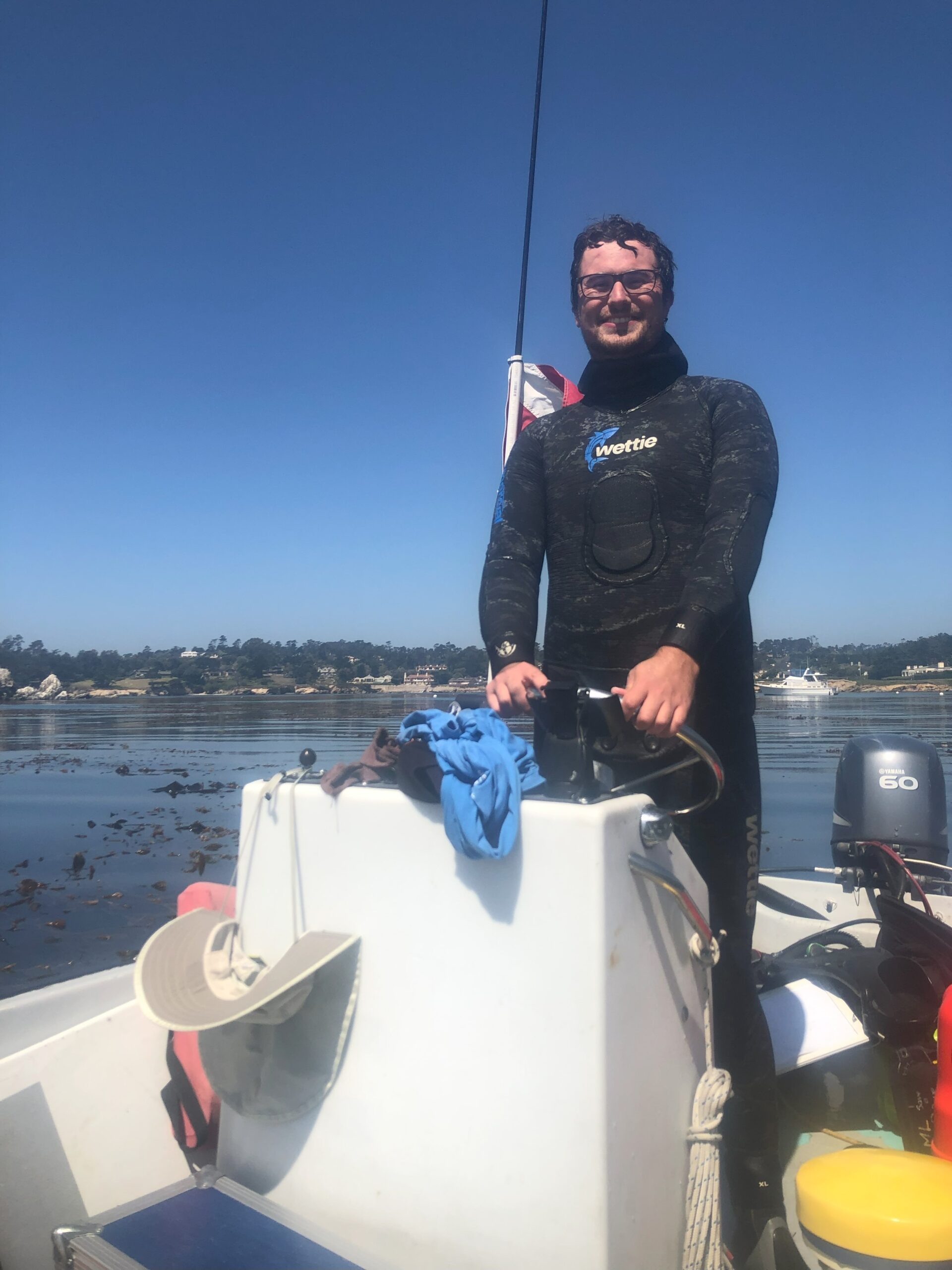"Observations of Currents, Waves, and Turbulence within a Giant Kelp Forest in Stillwater Cove, Carmel, California"
A Thesis Defense by Logan Grady
Live-Stream | March 25th, 2024 at 12:00 pm PDT
Abstract
Giant kelp (Macrocystis pyrifera) forests are hydrodynamically complex regions of enhanced drag that rely on turbulence for nutrient distribution and propagule dispersal. Currently, there are no in-situ measurements of turbulence within giant kelp forests and studies of driving mechanisms for turbulence are limited to controlled flume experiments. This study investigates relationships between currents, surface gravity waves, and turbulence within a kelp forest through deployment of moored instrumentation and kelp surveys in Stillwater Cove, California from July 22 to August 30, 2022. Oceanographic conditions during this time period are primarily driven by coastal upwelling and semi-diurnal internal tides, which likely originate from the Carmel Submarine Canyon. During rising tides, these internal waves are associated with cooling events and enhanced onshore velocity within the kelp forest. Estimates of gradient Richardson numbers and kelp Reynolds numbers indicate that cooling events are likely not associated with shear instabilities in the bottom layer, while enhanced bottom velocities could consistently generate turbulent kelp wake. Turbulent kinetic energy dissipation rate (ε) was calculated using data from an acoustic Doppler velocimeter, spanning a range of 1.9 x 10 -8 to 8.0 x 10 -7 m 2 /s 3 . Onshore velocities associated with cooling events are positively correlated with ε, while offshore velocities are not. This asymmetrical pattern implies a directional relationship triggered by cooling events, which may generate turbulence through interactions with dense kelp and rough bottom substrate. Models of submerged vegetation wake production and bottom boundary layer production of turbulent kinetic energy are compared to observed values of ε to assess hypothetical kelp and bed drag coefficients.
Bio
Logan graduated from the University of California Santa Cruz in 2020 with a B.S. in Environmental Science and a passion for scientific SCUBA diving in Monterey Bay. With an interest in ocean physics and the native kelp forests, he went on to attend Moss Landing Marine Laboratories under the advisorship of Dr. Tom Connolly. His current project investigates how nearshore currents, waves, and turbulence are influenced by giant kelp forests. In his free time, Logan can be found mountain biking, watching Formula 1, or at various trivia nights around Santa Cruz.

Diver Logan Grady prepares to measure the dimensions of an acoustic Doppler velocimeter deployed at his study site in Stillwater Cove. Photograph taken by Bennett Bugbee.



